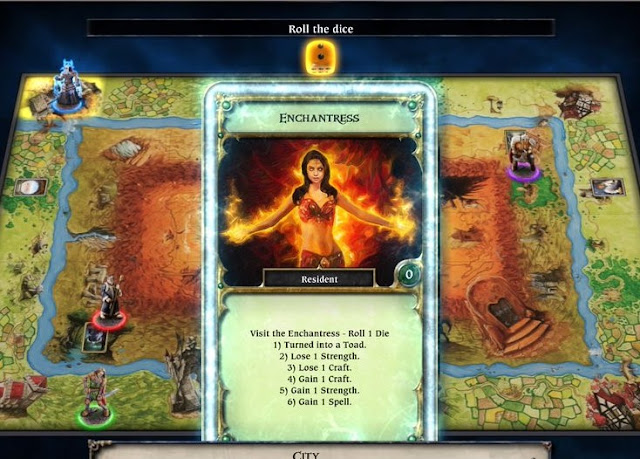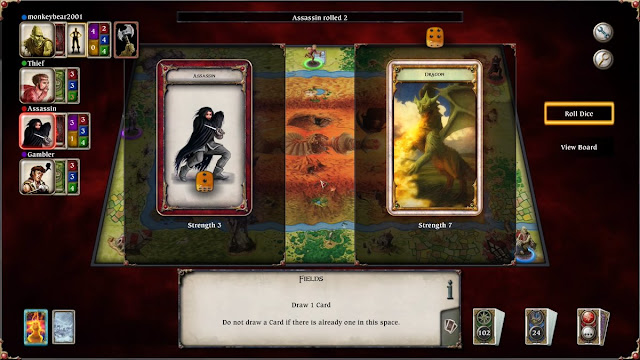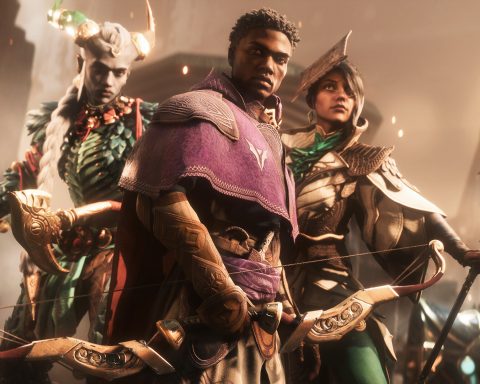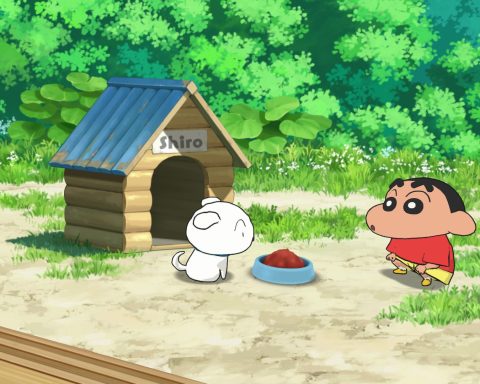Review by Matt S.
Talisman is one of the most well-regarded board games out there. First released way back in 1983, the game was clearly designed to capitalise on the love of pulp fantasy that was washing through board gamedom back then, thanks to the success of Dungeons & Dragons and similar. It has persisted on in popularity, moving from Games Workshop, as the original publisher, to Fantasy Flight Games, and is now out there on shelves in its fourth edition. Truly, very few board games survive over that kind of time period.
Related reading: The best board game on PlayStation 4 is easily Armello. Nick’s review of the game.
When it comes to the PlayStation 4 port of the game, Talisman is preserved wonderfully, but it’s also such a no-frills production that as a video game it’s only going to appeal to existing fans of the physical board game. There’s nothing wrong with creating a game for this audience, of course, but you only need to look at something like Armello to know that it’s quite possible to make a digital board game that does more than display a static board and pieces on the screen, and that when you do that, your game can transcend the standard audience for this kind of thing, and introduce the world of board games to an entirely new audience.
The basic play of Talisman can be summarised as a glorified take on Snakes and Ladders. Players are given a random character at the start of play, and that character’s goal is to reach the centre of the board and wipe out the other players before the same can happen to him/her. To do that you roll dice, move around the board and collect treasure or power that will help you survive the tougher challenges closer to the centre of the board.
Anyone who has played Talisman knows what an achievement this is. ^_^ #PS4share https://t.co/Oe13sko2TH pic.twitter.com/sKE39yZtcj— Matt @ DDNet (@DigitallyDownld) March 12, 2017
At first, most players will spend a lot of time on the outside ring of the board, slowly collecting as many resources and as much power as possible. You’ve got complete control over movement, so you can jump backwards and forwards at will to try and land on specific squares. Each square has a different effect, though most of them involve drawing a card and playing out whatever encounter that might be. Some are combat, others offer loot. Some have positive effects, others negative. At some point a player will feel confident that they’ve accumulated enough power to take on the second ring on the board, which is like the first, but deadlier. The final ring, and the centre of the board, is just cruel, and players that are too hasty in trying to run into there are just asking for trouble.
The game itself is remarkably simple to learn how to play; most people will be up to speed with it in about half an hour. Actually winning at the game is another matter; one of the reasons that this board game has proven to be so enduring is that it’s not necessarily easy, and each character (which, remember, are selected at random) has its own strengths and weaknesses to master. A fighter is, unsurprisingly, good at the melee combat. However, a wizard has a near unlimited supply of powerful spells to draw on, which he can use to harass opponents, or give himself boons. Some characters are “evil” and need to be played differently to those that are “good.” My personal favourite is a Devil Spawn character who has control over the game’s many spirits and has a remarkably bad time when he lands on civilized spaces.
Talisman is a really good time, and if you can get a multiplayer game of this going, so much the better. You’re in for a good night. The PlayStation 4 version of the game has all the expansions thrown in (that’s why it’s so expensive), and there’s enough in there to last you for a good long time.
But it’s not perfect. Talisman is, in some ways, a product of its time, and generally speaking the board game industry has moved on from what it offered. You know how Monopoly or Risk is somewhat out of favour now, and even the most casual of board gamers is more likely to want to play something like Settlers of Catan or Dominion? It’s a bit like that with Talisman. The game’s biggest problem is its utter reliance on dice and randomness.
Dice are right out of favour with board game designers, who prefer to provide players with an environment where they can make calculations based on reliable information. Where a game introduces too much luck; as the likes of Monopoly does, then there’s far too little agency on the part of the player, and it can become a very unengaging experience when the luck of the dice rolls puts you out of contention early and you’re never quite able to play catch-up from there.
Talisman relies entirely on multiple layers of randomness; the dice rolls themselves, which govern movement and, more critically, combat (“the only way I can lose this is to roll a 1, and the monster roll a 6!…. oh”). On top of that, the card deck, in which is hidden most of the game’s loot, and danger, is astonishingly fickle. There’s nothing worse than wasting a half dozen turns drawing difficult combat and/or useless cards while your opponents are scoring good loot.
— Matt @ DDNet (@DigitallyDownld) March 11, 2017
Because the randomness is so potent to the results in Talisman, there’s only so far that strategy can take you. Admittedly there is more room to be strategic than in a game like Snakes & Ladders, but it’s not by much, and over the years I’ve found Talisman to be a remarkably passive experience. It’s fun, but there’s no point getting involved when it’s really the dice that are going to determine what happens.
The PlayStation 4 port doesn’t do the game any favours; it’s very simple and clean, but generally uninspired. Talisman was already a very simple looking board game, and you’ll need a very large television screen to start to make out the details on squares and the like. On my screen they’re really just coloured squares, and I need to squint a little to read the text on the cards themselves. The music track running in the background is painful enough that this is the first game on the PS4 where I’ve felt an overwhelming urge to use the console’s ability to replace in-game music with streamed music from my Spotify playlist.
Talisman is a classic board game, and deserves respect for that. It’s also eminently playable to this day, and very easy to pick up and play; it’s a genuinely good game for lazy Sundays with friends. But it’s also not the perfect game, nor is this port the perfect port. And sadly that means that Talisman on PlayStation 4 won’t win over a new generation of fans to the game.
– Matt S.
Editor-in-Chief
Find me on Twitter: @digitallydownld









